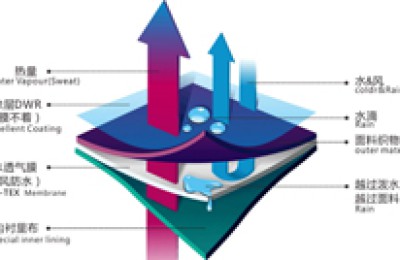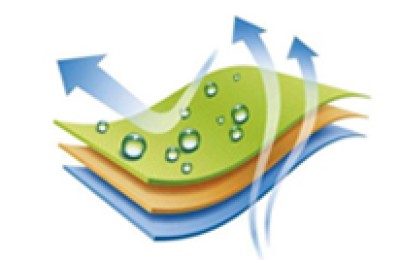Recently, the prices of textile raw materials have increased several times.
On July 22, spandex increased by another 500 yuan/ton, and last week the total increase in spandex reached 1,500 yuan/ton. The day before, some spandex factories even announced price increases: 20D increased by 3,000 yuan/ton, and 30D and above increased by 2,000 yuan/ton. The increase was astonishing.
In addition to the rising prices of raw materials such as spandex, the price of polyester filament has also begun to fall first and then rise. Relevant platform monitoring shows that recently, the mainstream negotiated price in the POY150D product market is 7,850 yuan/ton, a month-on-month increase of 325 yuan/ton; the FDY150D price is 8,025 yuan/ton, a month-on-month increase of 250 yuan/ton; the DTY150D price is 9,200 yuan/ton, a month-on-month increase. Increased by 400 yuan/ton.
The fabric quotation is only valid for 3 days, and the order can be placed but the price is not set
The prices of raw materials that change every week, or even several times a week, have affected the normal production of textile companies. After all, there is usually a time difference of about 1-2 months between the quotation and the actual operation of orders in the textile market. According to the current changes in raw material prices, it is obvious that the early quotation cannot guarantee fabric profits after 1-2 months. For this reason, many textile companies have shortened the validity period of fabric prices to ensure their own fabric profits.
Faced with the sharp rise in raw material prices, the only response is to stock up and stock up immediately, and try to control our costs at a lower price level. This is the reason why “buy up and not buy down” in the market. In the recent period, the price of raw materials has continued to rise, especially the purchase of spandex raw materials. Most of the market has responded in this way. In particular, weaving factories that have received large orders or are preparing to receive large orders must prepare stocks as early as possible.
Take spandex as an example. According to a trader, they received orders for more than 1 million meters of four-sided elastic in June. In order to cope with the continued rise in raw material prices, they ordered After signing a contract with the weaving factory, the weaving factory immediately started stocking up and preparing relevant raw materials. This method seems to be a wise way to avoid the price increase of spandex and the inability to operate subsequent orders. However, this method has a prerequisite, that is, there must be sufficient supply of spandex raw materials. If the supply of spandex is tight, 1 million meters of four-way stretch If the required quantity cannot be purchased immediately, rising costs are inevitable.
The actual spandex market has now fallen into a situation where you may not be able to buy it even if you want to. According to the person in charge of a four-way elastic weaving manufacturer, they now have to queue up to buy spandex, and it is not always possible to buy spandex if they want to, and they even need to find someone to go through the back door. The quantity purchased at one time will not last long in the factory, and it is unlikely that all of it will be used for one customer’s order. It is more or less necessary to ensure that every customer order can be produced.
In addition, generally speaking, if the price of raw materials changes by more than 500 yuan/ton, the price of fabrics will change accordingly. For this reason, they clearly stated to customers that the current elastic fabric quotation is only valid for three days. You will need to re-quote after three days, and you can order in advance, but the price is not fixed.
If the negotiation is not good, the negotiation will collapse. The helplessness of textile enterprises:
The orders are not small, but it is getting harder and harder to make money!
Faced with the fierce price increase of raw materials, in addition to spandex fabrics, more fabric companies are out of reach to increase prices.
“It is difficult to increase the price because customers do not accept it.” Li Changchun, manager of Suzhou Wujiang Weihua Textile Co., Ltd., revealed that the company’s current order number is basically the same as before the epidemic. However, there has been a significant decline in profits. “We used to be too lazy to do orders that made only a dime, but now everyone is rushing to do orders that only make a few cents.”
Yang Jiandong, general manager of Haimen Youyuan Textile Co., Ltd., also said helplessly: “Although the orders are not small, it is getting more and more difficult to make money. Since the second half of last year, cotton prices have begun to rise rapidly, and yarn prices have also risen. With our production Taking gray fabrics as an example, the current cost has generally increased by 20% to 30%.”
“You cannot adjust prices casually. Once the negotiation is not good, the negotiation will collapse.” This became the reason for many interviewees. This is the consensus of the heads of fabric companies, especially small and medium-sized enterprises. In this “beating the drum and spreading flowers” type of price increase started by the upstream, fabric companies are helplessly digesting more rising cost pressure.
The wave of price increases affects the entire industry chain
It cannot be denied that some Although fabric companies are in an embarrassing situation – orders are obviously losing money, they still have to continue to take orders. A person in charge of a fabric company who did not want to be named told reporters: “This is mainly to dilute the early fixed costs and retain workers.” He said that it is difficult to recruit workers now, and if the company shuts down, the company will have to spend money. If more funds are used to subsidize workers’ wages, the losses will be even greater. The person in charge said frankly: “In order to prevent the factory’s equipment from being idle too much, companies have to bite the bullet even if they lose a lot of orders. Only if the capacity utilization rate reaches 70% to 80% can companies cut off some of the companies that are losing too much.” Orders.”
Yang Jiandong believes that fabric companies will inevitably be affected by the soaring prices of textile raw materials. The pressure of rising prices for cotton, cotton yarn, polyester-cotton yarn, etc. will eventually need to be shared by multiple parties including fabric companies and clothing buyers. It cannot be solved by a significant price increase in one link alone. All parties need to make concessions.
Faced with this booming wave of price increases,…Fabric companies are not the only ones feeling anxious.
A technical director of a clothing brand in Shenzhen, who did not want to be named, told reporters that the wave of price increases this year has had a relatively large impact on the company. “It is unknown whether the cost superposition can be passed on to consumers and how much consumers can absorb. The method we are taking now is to join forces with other clothing brands to centralize and aggregate their materials for purchase. Through a large amount of material preparation, Negotiate prices with fabric manufacturers to reduce costs.” He predicted that this round of raw material price increases should see a correction in the second half of this year, and prices should drop by then. But he also pointed out that even if the price of raw materials does drop, it will be difficult for fabric companies to change immediately. “After all, the ‘blood loss’ in the first half of the year needs to be compensated.”
This is indeed a problem that many fabric companies are worried about: in the first half of the year, the operations of fabric companies have been greatly affected. Next, if the price of raw materials cannot return to normal prices in time, it will inevitably bring huge challenges to the operations of fabric companies throughout the year. </p








